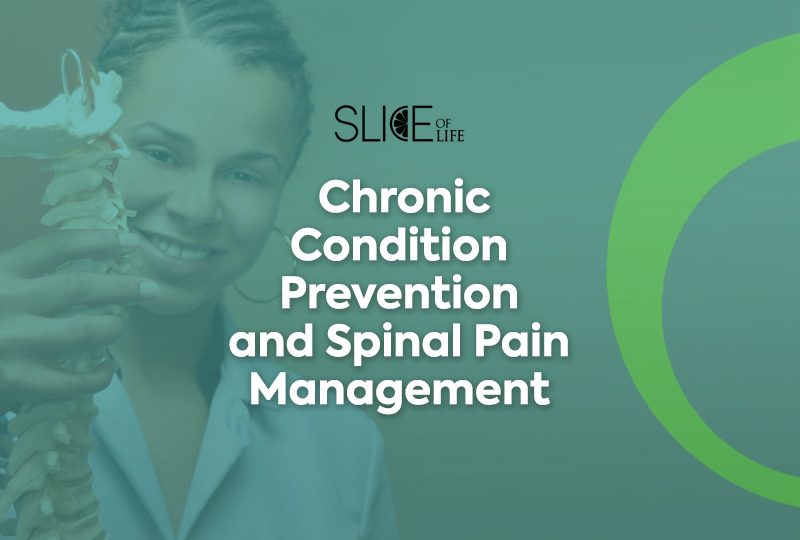Let’s play a game of ‘Would You Rather?’ Would you rather try to live your life with a debilitating chronic pain condition or take steps to prevent it? That seems like a no-brainer, yet the traditional medical system does not seem to offer much in the ways of preventing chronic pain as the population ages, other than suggesting potentially addictive painkillers or drastic surgeries.
According to the National Center for Health Statistic’s November 2020 Data Brief, chronic pain is a growing concern plaguing the American population, with 20.4% of adults reporting chronic pain in 2019. Chronic pain and high-impact chronic pain, as in pain that frequently limits the ability to live and work in a desired manner, appear to increase with age and appear most prevalent among adults ages 65 and over. Additionally, adults living in more rural areas appear to be at a higher risk for chronic pain symptoms.
What can we do to decrease our likelihood of developing chronic pain? In The Foundation for Chiropractic Progress’ (F4CP) article, “How Holistic Spinal Pain Management Is An Important Ally To Chronic Condition Prevention And Control,” it outlines five essential focus areas to bolster spinal health, promote overall well-being and contribute to the prevention of chronic pain conditions.
Posture
Remember to sit up straight and stand up straight as much as possible, though not too rigidly. A balanced posture benefits the health of the spine, prevents neck and back pain, and allows for better breathing and circulation to protect against cardiovascular difficulties. The correct posture for an individual varies based on position as well (sitting, standing, sleeping). The Cleveland Clinic suggests some general posture rules that can prove helpful:
- Your head should rest above your shoulders. Don’t pull your neck back or allow your head to hang heavily forward. Be careful where you position electronic devices, as leaning to look at a phone, laptop or other device can lead to ‘tech neck’ over time.
- Shoulders should align above your hips. If sitting down, try to keep a 90-degree angle between your back and hips.
- Keep your lower body stable. The best place for your legs and feet depends on if you’re sitting down or standing up. If sitting, feet should be flat on the floor in front of you with your knees bent at 90 degrees and your ankles separated. If your feet can’t reach the floor, a footrest is recommended. When standing, keep your feet hip-distance apart. Keep most of your weight centered on the balls of your feet.
Consistent Exercise
A body in motion tends to stay in motion and feel better doing it too. And this doesn’t mean everyone needs to work out like gym rats or Olympic sprinters either. It’s less about what exact physical activities you do and more about the consistency and frequency in which you do them. A moderately paced walk four times a week is ultimately better in the long term than a brisk run only once a week – and probably more manageable for the average person. A regular and frequent exercise routine helps to keep weight under control, as well as with heart health, metabolism and reducing stress.
It is easiest to stay consistent with exercise when you find ways to make it fun and social. Join a gym and actually use it on a regular basis, maybe even bringing a friend along. Sign up for a Zumba class, a pickleball tournament or even try a workout-based video game. Whatever it is, find something that you can commit to doing regularly that gets your heart rate up.
Nutrition
A healthy plant-forward or plant-based diet can work wonders for your health and help prevent chronic diseases related to diet, such as obesity and joint pain issues from carrying extra weight. A diet that centers around whole grains, fruits, vegetables and legumes can ease the need for counting calories as well, as these foods tend to be less calorically dense than processed foods. For easing of depression symptoms, a balanced diet is found to be helpful also.
Sleep Well
Night owls beware. Seven to eight hours a night for adults is not only recommended but crucial for overall well-being, brain health and preventing chronic pain conditions. Getting a good night’s sleep on a consistent basis restores the body and the mind, making it easier to complete daily physical activities when awake due to better energy and motivation levels.
Physical exertion and solid nutrition are key factors in sleep hygiene. Other ways to catch forty winks include shutting off screens at least an hour before bed, investing in a supportive mattress and making sure the room is cool, dark and quiet.
Chiropractic Care as Intervention
Whether you are currently experiencing neuro-musculoskeletal pain or think you are at risk for developing symptoms, it’s wise to visit a doctor of chiropractic (DC) to receive a personalized, holistic healthcare plan that will address all the elements listed above and more. Experience drug-free, safe and evidence-based care that can effectively prevent and/or treat pain.


Social Media